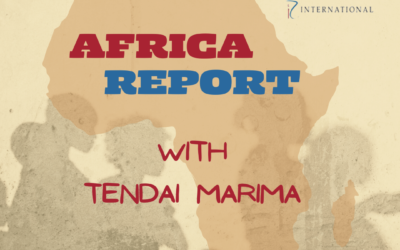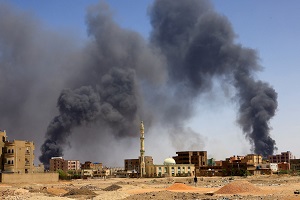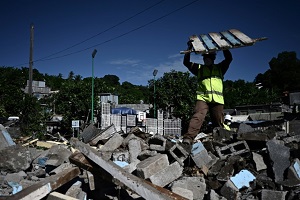
Staff Writer
The 2nd phase launch vessel of Space X’s Falcón 9 1a launch vehicle is predicted to hit the moon’s surface in March 2022, at a speed of over 9000 miles, raising much interest. The vehicle was used to launch NASA’s Deep Space Climate Observatory (DSCOVR) satellite in 2015. The DSCOVR is used to assess displacement and solar wind, especially in the gravity free regions of the earth and the sun.
Space debris is becomingly increasingly concerning, especially lower orbital ranges. This is since many private companies have in recent decades launched low-orbital satellites, and since many of these may soon be ending their service.
Speaking to Radio Islam International, Dr Ajey Lele, senior fellow in space security and strategic technologies at the Institute for Defence Studies and Analysis, argued that this crash was noteworthy, because for the first time an astronomer was actually able to document the source of the debris, but that it likely will pose no real threat to human life and earth. He said, “this is going to be a very interesting phenomena, for the first time an astronomer has actually identified that this chunk is a freely moving part… But right now, I personally don’t feel that there is any threat to anybody.” Dr Lele noted that it was not the size of the vehicle that was significant, but the speed of the impact. This is especially since most of the fuel will have already been burnt out. It is also noteworthy that this means that no one can say with real certainty the dimensions and weight of the vehicle, but that Space X generally uses a “heavy” launch vehicle.
Dr Lele noted that this vehicle was in what scientist’s called “Deep Space”, over a hundred thousand kilometres away from Earth’s surface, meaning that it poses no real threat, because of its tremendous distance, and since there is very little space activity occurring in this space. However, in low and medium orbit (400 to 1200 km from earth and 1300 to 36000 km), there is growing concern, especially since space activity is increasing. Moreover, the predictability of space debris is largely unknown, and their destructive impact on satellites unquantifiable. “Right now, there is a significant number of debris which is available into lower orbit, and that is extremely dangerous for various activities… We do not have any sort of a globally accepted mechanism for management of space debris, but there are certain informal mechanisms like space debris mitigation guidelines… people have got major concerns because of the increasing number of debris, particularly into lower earth orbit and medium orbit.”
Regarding colonies on the moon, Dr Lele noted that three factors are informing this. The first was resources, especially Helium 3 and other minerals, which the moon was rich in, and which would be critical in energy security. The second was the increasing competition between China and the US, and last, the real attempt by people such as Elon Musk to create actual living colonies on the move. This was different to the previous space race, which was more about technology and the competition between the US and Russia during the Cold War. Significantly, only 12 people have actually landed on the moon.
Elon Musk’s Spacex Rocket set for 9000 km/h crash into the Moon – Ajey Lele







0 Comments